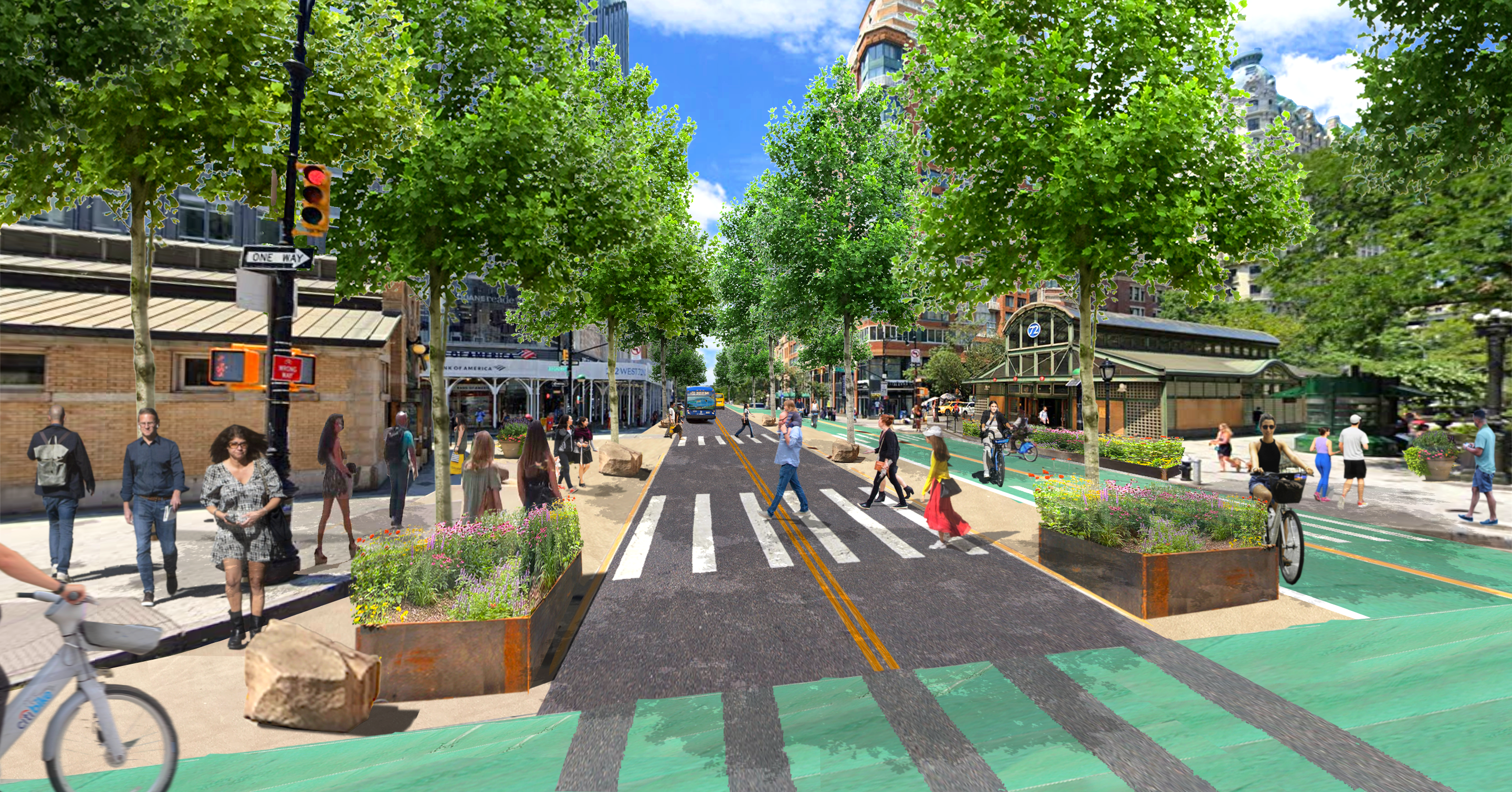Pedestrians, bus riders, and micro-mobility users make up three-quarters of people on bustling W. 72nd Street — but receive just 1.8 percent of the roadway design. A new proposal from Streetopia UWS envisions the street if city officials put people first on the half-mile corridor.
Streetopia — a division of Open Plans, Streetsblog's parent organization — proposes to cut the unpleasant arterial from four vehicle lanes to two, reduce parking and add a two-way protected bike lane along the northern curb.
The design would revert the strip to its historic role as a safe thoroughfare connecting Riverside Park to Central Park. As the Times reported in 2007:
“With its comfortably appointed dwellings, W. 72nd Street was a major residential boulevard, connecting the carriage drives of Central Park with Riverside Drive. …The entire street was under the supervision of the Department of Parks, which prohibited (non-local) business traffic and paid for special plantings along the sidewalks. … Later, the automobile converted a genteel boulevard into an internal combustion highway.”
But Streetopia says its “complete street” plan would:
- Connect two iconic parks that collectively receive over 50 million visitors each year.
- Calm traffic, reduce noise, and clean the air for residents along the corridor.
- Make it safer and more comfortable for pedestrians to get around.
- Act as a vital east-west spine in an eventual comprehensive cycling network.
- Help businesses by moving people, goods, and services more efficiently in limited street space.
- Plus, with lots of trees and rain gardens, the birds, butterflies, and bees would love it.
But this is more than just creating a crosstown park link. A redesigned street would not only look better; it would speed up buses and increase safety for cyclists and micro-mobility users who already account for 8 percent of people using the street.
Check out the before-and-after for what West 72nd Street could be if the city prioritized people over cars and car storage:
The design aims to make its users "at once comfortable and connected, socially stimulated and personally at ease," the group said in a statement.
"We hope this vision can inspire everyday people to imagine what’s possible, show elected officials there’s a demand for real change that benefits their constituents, and give the Department of Transportation license to do something truly amazing on this corridor."
Cars and trucks could still access the street under the plan, but only for local access. Vehicles would have to make the next available turn — allowing for faster buses, which currently move at the pace of a brisk snail. Buses account for 22.5 percent of people on West 72nd Street, despite making up just 1.2 percent of "movements."

Manhattan Community Board 7 asked for a "physically protected" bike lane on W. 72nd Street back in 2020. So far, the DOT has not provided improved safety, even as 60 people were injured in crashes since the board's July 2020 vote, according to data compiled by Crashmapper.
Streetopia's proposal would not only follow through on CB7's four-year-old request. It would add trees, outdoor dining, public seating, bus boarding islands and dedicated parking for deliveries and pick-ups and drop-offs.
Feedback for Mayor Adams's "curb management action plan" for the neighborhood shows a desire for the DOT to think big on W. 72nd Street. Members of the public have complained about extra-long crossing distances, an insufficient number of bus stops and crowding on the sidewalk.
Read more about the proposal on the group's "Reimagining W72" webpage and take action here.






